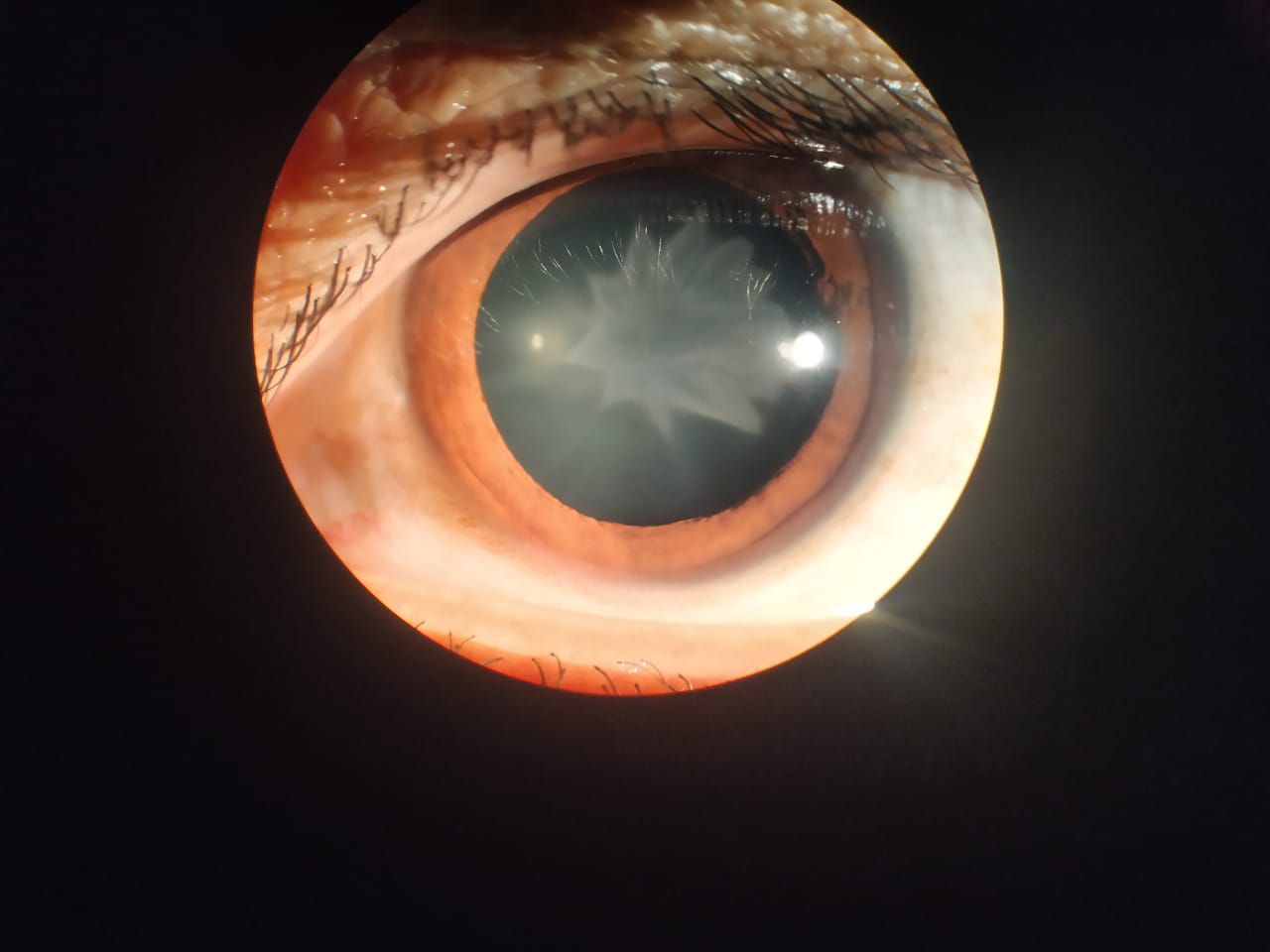Clinical Image
1Department of Ophthalmology, Shri Lal Bahadur Shastri Government Medical College and Hospital, Nerchowk, Distt. Mandi, Himachal Pradesh, India
2Department of Ophthalmology, Shri Lal Bahadur Shastri Government Medical College and Hospital, Nerchowk, Distt. Mandi, Himachal Pradesh, India
3Department of Ophthalmology, Shri Lal Bahadur Shastri Government Medical College and Hospital, Nerchowk, Distt. Mandi, Himachal Pradesh, India
4Department of Ophthalmology, Shri Lal Bahadur Shastri Government Medical College and Hospital, Nerchowk, Distt. Mandi, Himachal Pradesh, Ind
Keywords Cataract; Rosette; Trauma
CASE REPORT
A 30‐year‐old female presented with a history of decreased vision in the left eye for the past one month following blunt trauma to the left eye. Her visual acuity was 6/6 in the right eye and 6/18 in the left eye which improved to 6/9 with pinhole. There was no other significant medical, surgical, family, or drug abuse history. Pupillary reactions, ocular movements, colour vision, intraocular pressure and fundus examination were within normal limits in both the eyes. Slit lamp examination of the left eye revealed white axial opacities in the form of distinct ‘petals’, giving it the name of classical Rosette cataract (Figure 1). A laboratory workup plus optical coherence tomography was within normal limits. The patient has been kept for cataract extraction surgery with intraocular lens implantation.
Rosette or stellate‐shaped cataracts are associated with blunt injury of the eye, diabetes [1], lightning injury [2], exposure to infrared energy or ionising radiation.[3] Reversal of rosette cataract (because of diabetes mellitus) has also been reported [4].
REFERENCES
1. Sethi A, Ramasubramanian S. Double rosette cataract:A striking image!. Indian J Ophthalmol. 2019;67(1):124-5. doi: 10.4103/ijo.IJO_941_18.
[ Links ]
2. Venkateswaran N, Galor A. Rosette-Shaped Cataract Due to Lightning Injury. JAMA Ophthalmol. 2018;136(1):e175719. doi: 10.1001/jamaophthalmol.2017.5719.
[ Links ]
3. Singh RB, Thakur S, Ichhpujani P. Traumatic rosette cataract. BMJ Case Rep. 2018;11(1). doi: 10.1136/bcr-2018-227465.
[ Links ]
4. Ramkumar H, Basti S. Reversal of bilateral rosette cataracts with glycemic control. ScientificWorldJournal. 2008;8:1150-1. doi: 10.1100/tsw.2008.139.
[ Links ]
© 2020 The Authors. Published by Iberoamerican Journal of Medicine















